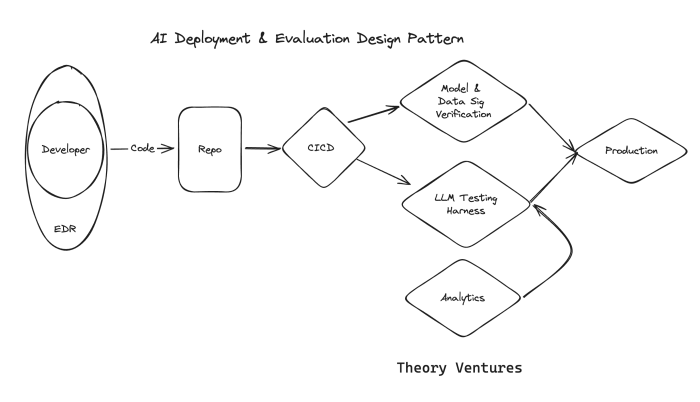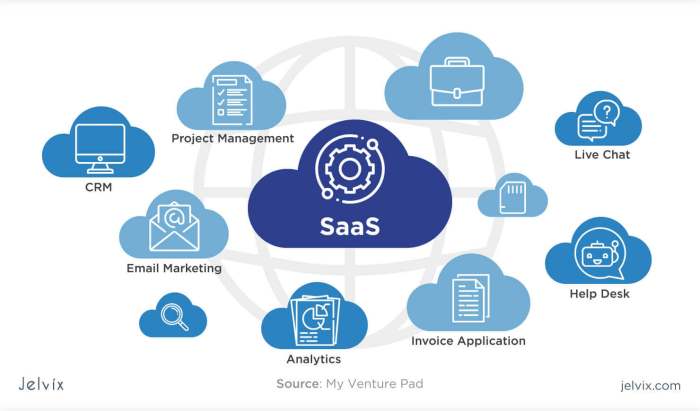This exploration delves into the crucial architectural patterns shaping the design and deployment of Artificial Intelligence applications. Understanding these patterns is vital for building robust, scalable, and maintainable AI systems, from simple models to complex, real-time applications.
Different architectural approaches, like microservices, event-driven, serverless, and cloud-native strategies, each offer unique advantages and considerations. This discussion will cover the key features, strengths, and weaknesses of each, highlighting their suitability for diverse AI use cases. We will also examine the critical roles of data pipelines, model management systems, and security in ensuring successful AI implementation.
Introduction to Architectural Patterns for AI Applications

Architectural patterns provide a structured approach to designing AI applications, enabling scalability, maintainability, and reusability. These patterns encapsulate best practices, facilitating the development of robust and efficient AI systems. Understanding these patterns is crucial for anyone working with AI, from researchers to engineers. They offer a blueprint for building AI solutions that can adapt to evolving needs and handle increasing data volumes.A well-defined architectural pattern allows for the clear separation of concerns, leading to modular and easily understandable AI systems.
This promotes collaboration among team members and streamlines the development process. By identifying and applying appropriate patterns, developers can build AI applications that are not only functional but also future-proof.
Common Architectural Patterns in AI Applications
Various architectural patterns have emerged to address the unique challenges of AI development. These patterns encompass diverse approaches, catering to different needs and application types. Key patterns include pipelines, microservices, and federated learning.
- Pipeline Architectures: These architectures are common in supervised learning tasks. Data flows through a series of stages, such as data preprocessing, feature engineering, model training, and prediction. This sequential approach is effective for applications with well-defined steps and allows for modularity. For instance, a natural language processing (NLP) pipeline might involve tokenization, part-of-speech tagging, and sentiment analysis.
- Microservice Architectures: These architectures break down complex AI systems into smaller, independent services. This approach allows for parallel development, deployment, and scaling of individual components. It’s beneficial when dealing with complex, large-scale applications where different teams can work on separate parts of the system. For example, an image recognition system could have separate services for image preprocessing, object detection, and classification.
- Federated Learning Architectures: This architecture is ideal for scenarios involving privacy-sensitive data. Instead of centralizing data, training happens on individual devices or servers, and the learned models are aggregated. This preserves data privacy while enabling collaborative learning. For instance, healthcare providers could train a model to detect diseases without sharing patient data with a central server.
Components and Interrelationships
Each architectural pattern comprises specific components that interact in defined ways. Understanding these relationships is crucial for effective design and implementation.
- Pipeline Architecture Components: These components include data sources, preprocessing modules, feature extraction modules, model training modules, and prediction modules. These components work sequentially, with the output of one stage acting as the input for the next.
- Microservice Architecture Components: Microservices consist of independent units, each responsible for a specific task. These units communicate with each other through well-defined APIs, enabling modularity and scalability. The interconnections are established through messaging protocols or APIs, providing flexibility.
- Federated Learning Components: Federated learning involves individual devices or servers, each having a local model. These models are updated using locally computed gradients, and the updates are aggregated to a central server to update the global model. This process ensures data privacy while maintaining model accuracy.
Examples of AI Applications and Architectural Patterns
Different AI applications often benefit from specific architectural patterns. The choice depends on factors such as data volume, complexity, and required scalability.
- Image Recognition: An image recognition system for object detection might employ a microservice architecture, with separate services for image preprocessing, feature extraction, and classification. This allows for independent scaling and maintenance of each component.
- Natural Language Processing: A natural language processing (NLP) system for sentiment analysis could use a pipeline architecture, where stages include text preprocessing, feature extraction, and sentiment classification. This approach simplifies the flow of data between components.
- Recommendation Systems: Recommendation systems, used in e-commerce, often leverage microservices. This allows for independent development and scaling of different components such as data collection, model training, and recommendation generation.
Comparison of Architectural Patterns
The following table summarizes the key characteristics, strengths, and weaknesses of each architectural pattern.
| Pattern | Key Characteristics | Strengths | Weaknesses |
|---|---|---|---|
| Pipeline | Sequential data flow | Simple, modular, easy to understand | Limited concurrency, bottlenecks |
| Microservices | Independent services | Scalability, maintainability, modularity | Increased complexity, communication overhead |
| Federated Learning | Distributed training | Data privacy, collaborative learning | Model accuracy, communication challenges |
Microservices Architecture for AI
Microservices architecture is increasingly adopted for AI applications due to its inherent flexibility and scalability. This approach allows for the independent development, deployment, and scaling of individual AI components, leading to faster iteration cycles and improved resilience to failures. This structure is particularly beneficial for real-time applications like object detection, where different AI models (e.g., image preprocessing, object classification, tracking) can be orchestrated in parallel.The modular nature of microservices architecture allows for specialized AI components to be developed by different teams, fostering expertise and specialization within the organization.
This modularity also enhances maintainability, as changes to one component do not necessarily impact others. This structure enables AI applications to adapt to evolving requirements and incorporate new models without disrupting the entire system.
Real-time Object Detection System Design
A microservices architecture for a real-time object detection system can be structured around distinct functionalities. For example, an image preprocessing microservice handles tasks such as image resizing, color conversion, and noise reduction. A separate object detection microservice employs a deep learning model to identify objects within the image. A tracking microservice can then maintain a history of identified objects over time.
Advantages of Microservices for AI Workloads
- Improved Scalability: Individual microservices can be scaled independently based on demand, enabling efficient resource allocation for specific AI tasks. For instance, the object detection microservice might need more processing power during peak traffic periods, while the image preprocessing microservice may require less.
- Enhanced Maintainability: Modifications to one microservice do not necessitate changes to others, which simplifies updates and bug fixes. This reduces the risk of unintended consequences when making code changes.
- Increased Flexibility: New AI models or algorithms can be integrated into the system more easily by creating new microservices without impacting existing functionalities.
- Improved Fault Isolation: If one microservice fails, the rest of the system remains unaffected, ensuring continuous operation and data integrity. This characteristic is particularly important for real-time applications, where downtime is unacceptable.
Disadvantages of Microservices for AI Workloads
- Increased Complexity: Managing a distributed system of microservices requires a more complex infrastructure, including deployment tools and monitoring systems. Coordination between these services is crucial.
- Network Overhead: Communication between microservices can introduce latency, potentially impacting real-time performance. Careful consideration of network protocols and optimization strategies is essential.
- Data Consistency Challenges: Maintaining data consistency across multiple microservices can be challenging, requiring meticulous design of data pipelines and synchronization mechanisms. For instance, a data inconsistency can arise when the output from image preprocessing isn’t immediately available for object detection.
Deployment and Management in Distributed Environments
Containerization technologies like Docker and orchestration platforms like Kubernetes are vital for deploying and managing AI microservices in a distributed environment. Containers encapsulate the microservice’s dependencies, ensuring consistent execution across different environments. Kubernetes automates the deployment, scaling, and management of these containers, simplifying the administration of the entire system.
Data Pipelines and API Interactions
Data pipelines act as the conduits for data flow between microservices. For example, the output of the image preprocessing microservice is fed into the object detection microservice through a well-defined API. This structured interaction ensures seamless data transfer and synchronization between components.
Importance of Containerization and Orchestration
Containerization ensures consistent execution environments across different deployment environments, preventing compatibility issues. Orchestration tools like Kubernetes provide automated scaling, resource allocation, and fault tolerance for AI microservices. These mechanisms ensure that the system remains responsive and resilient in a distributed environment, even under high load conditions.
Event-Driven Architecture for AI
Event-driven architectures (EDAs) are becoming increasingly important for AI applications, particularly those involving real-time data processing and complex workflows. Their ability to react to events and trigger actions in a decoupled manner aligns well with the dynamic nature of many AI systems. This approach allows for scalability and flexibility, enabling the handling of large volumes of data and the seamless integration of new AI models.Event-driven architectures offer a powerful framework for designing AI systems that respond to real-time data streams.
Instead of a rigid, sequential flow, EDA systems react to events, allowing for asynchronous processing and parallel execution. This approach is particularly valuable for AI applications that require quick responses to changes in data, like fraud detection or real-time recommendations.
Suitability for AI Applications
Event-driven architectures excel in AI applications where data arrives asynchronously and requires immediate or near-immediate processing. The decoupled nature of EDA allows for independent processing of events, enabling scaling and fault tolerance. AI models can be triggered by events, ensuring that critical data isn’t missed and actions are taken promptly. For instance, a fraud detection system can react to suspicious transaction events without waiting for a predefined schedule.
Event Handling in AI Systems
Events serve as triggers for actions and computations in AI systems. A transaction event, for example, might initiate a fraud detection model’s evaluation. This evaluation could then trigger an alert if suspicious activity is identified. This approach enables real-time responses to critical events, allowing AI systems to proactively address issues and adapt to changing circumstances. The event-driven process ensures agility and efficiency, particularly in high-volume data scenarios.
The core idea is that an event is detected, processed, and results trigger further actions.
Examples of Event-Driven AI Applications
Event-driven AI applications are prevalent in various fields. A fraud detection system might use transaction events to trigger real-time alerts and actions. Similarly, a recommendation engine could utilize user interaction events to generate and update recommendations. For example, a user viewing a product on an e-commerce site could trigger an event that updates recommendations based on that interaction.
Implementing Message Queues and Brokers
Message queues and brokers are essential components of event-driven systems. They act as intermediaries, receiving events and ensuring their delivery to the appropriate consumers. Message queues provide a buffer between producers and consumers, enabling asynchronous communication. This allows AI systems to handle events without being blocked by slower consumers. Brokers manage the routing and delivery of events, enabling complex workflows and ensuring data integrity.Consider a system where a fraud detection model receives transaction events.
The model (consumer) can subscribe to a message queue, enabling it to receive and process events without waiting for each event. This queue acts as a buffer to handle high volumes of transactions.
Advantages and Challenges of Event-Driven Architectures
| Advantages | Challenges | ||
|---|---|---|---|
| Scalability and Flexibility | Complex System Design | ||
| Real-time Data Processing | Debugging and Monitoring | ||
| Decoupled Components | Increased Complexity | ||
| Improved Fault Tolerance | Data Consistency |
The table above illustrates the key advantages and challenges of event-driven architectures in AI applications. Event-driven architectures offer scalability and flexibility for real-time data processing, and the decoupled nature of the system leads to improved fault tolerance. However, complex system design and debugging can pose challenges, along with potential issues related to data consistency and overall complexity.
Serverless Architecture for AI

Serverless architectures are rapidly gaining traction in the field of AI, offering a compelling alternative to traditional cloud deployments. This approach allows developers to focus on building AI models and algorithms without managing the underlying infrastructure, leading to significant cost savings and increased agility. This approach streamlines the development process, enabling faster iteration cycles and reduced operational overhead.Serverless functions, a core component of this architecture, handle specific tasks within the AI workflow, such as model inference and training.
This modularity enables efficient resource utilization and cost optimization, making it particularly attractive for AI applications that experience fluctuating workloads.
Model Inference with Serverless Functions
Serverless functions excel at handling model inference tasks. When an input request is received, a serverless function is triggered. This function loads the pre-trained AI model, performs the necessary computations, and returns the prediction. This approach is particularly well-suited for real-time applications, where quick responses are crucial. For example, image recognition for a live video feed, or natural language processing for a chatbot, would benefit from this approach.
Model Training with Serverless Functions
Serverless functions can also play a critical role in AI model training. Large-scale model training often involves computationally intensive tasks. Serverless functions can be used to manage individual training steps, enabling efficient utilization of cloud resources. These functions can be orchestrated to perform data preprocessing, model optimization, and evaluation, all within the serverless framework. This approach is advantageous when the training process requires variable amounts of computing power, as the functions automatically scale up or down as needed.
Comparison to Traditional Cloud-Based AI Deployments
Traditional cloud deployments often require managing virtual machines (VMs) and configuring infrastructure. This can be complex and time-consuming, especially for applications with fluctuating workloads. Serverless architectures, in contrast, abstract away the underlying infrastructure management, enabling developers to focus on the AI logic. This leads to a faster development cycle and reduced operational overhead.
Cost Advantages and Scalability of Serverless AI
Serverless architectures offer significant cost advantages by only charging for the actual compute time used. This pay-as-you-go model avoids the costs associated with maintaining idle or underutilized resources. Furthermore, the inherent scalability of serverless functions allows applications to handle fluctuating workloads efficiently, automatically scaling up or down based on demand. This elasticity is crucial for AI applications, which may experience peaks in demand, like during peak hours of use.
Use Cases for Serverless AI
- Real-time AI applications: Serverless functions are ideal for applications requiring immediate responses, such as real-time image recognition, speech-to-text conversion, and fraud detection. A good example is a serverless application that detects fraudulent transactions in real-time, allowing financial institutions to react swiftly.
- AI model experimentation: The agility and cost-effectiveness of serverless functions are well-suited for rapid prototyping and experimentation with different AI models. The quick setup and tear-down of serverless functions reduce the costs of testing various models.
- Batch processing tasks: Serverless functions can be effectively used for batch processing tasks like data preprocessing or feature extraction, providing a scalable and cost-effective solution.
- Model deployment: Deploying trained models using serverless functions allows for rapid and flexible deployment, with scaling and cost optimization.
Cloud-Native Architecture for AI
Cloud-native architectures are rapidly becoming the preferred approach for developing and deploying AI applications. Leveraging the inherent scalability, flexibility, and resilience of cloud platforms, these architectures enable AI systems to adapt to fluctuating workloads and changing requirements efficiently. This approach fundamentally shifts the focus from managing infrastructure to focusing on application development and deployment.Cloud-native architectures empower organizations to build and deploy AI applications that are more adaptable, cost-effective, and scalable than traditional on-premises solutions.
These architectures leverage the inherent elasticity and scalability of cloud computing, allowing AI systems to respond to demand fluctuations dynamically. The principles of cloud-native development are central to the successful implementation of AI in modern business contexts.
Principles of Cloud-Native Architecture
Cloud-native architectures are built on a set of core principles that foster agility, resilience, and scalability. These principles include a focus on automation, containerization, microservices, and declarative configuration. These characteristics are essential for building highly available and adaptable AI applications.
Containers in Cloud-Native AI
Containers, such as Docker, play a critical role in packaging and deploying AI applications. They encapsulate the application code, libraries, system tools, and dependencies into a self-contained unit, ensuring consistent execution across various environments. This portability is crucial for AI development, testing, and deployment across different cloud platforms. The use of containers facilitates faster deployment and easier management of AI models and applications.
Orchestration in Cloud-Native AI
Orchestration tools, such as Kubernetes, manage the deployment, scaling, and management of containerized applications. These tools automate tasks like deploying containers to multiple servers, scaling resources up or down based on demand, and managing the overall lifecycle of the application. Orchestration tools enhance the efficiency and reliability of AI application deployment and maintenance, minimizing manual intervention.
Microservices in Cloud-Native AI
Microservices architecture is a crucial component of cloud-native AI. It decomposes complex AI applications into smaller, independent services. This decomposition allows for faster development, easier scaling, and greater flexibility. Microservices enable teams to work on different parts of the AI application independently, fostering faster iteration cycles and easier maintenance.
Cloud-Native AI vs. Traditional On-Premises Solutions
Traditional on-premises solutions often struggle with scaling and adapting to changing demands. In contrast, cloud-native architectures excel at handling fluctuating workloads and increasing demands. Cloud-native AI solutions provide greater flexibility, cost-effectiveness, and agility compared to traditional on-premises deployments.
Benefits of Cloud-Native Technologies for AI
Cloud-native technologies offer several advantages for AI development and deployment. These advantages include increased agility, improved scalability, and enhanced cost-effectiveness. Cloud-native solutions allow for quicker iterations, enabling quicker adaptation to changing market needs. These technologies facilitate the development of more resilient AI systems, capable of handling fluctuating workloads effectively.
Best Practices for Building and Deploying AI Applications on the Cloud
Several best practices are essential for successful cloud-native AI development and deployment. These include leveraging containerization for consistent execution, using orchestration tools for efficient management, and adopting a microservices architecture for enhanced flexibility. Using cloud-native technologies enables AI applications to be deployed and scaled efficiently and cost-effectively. Implementing a robust monitoring and logging strategy is crucial for effective troubleshooting and performance optimization.
This strategy allows for quick identification of potential issues.
Data Pipelines for AI Applications

Data pipelines are critical for the success of any AI application. They are the backbone of the process, responsible for the efficient and reliable movement of data through various stages, from initial ingestion to final consumption by the AI model. A well-designed pipeline ensures data quality, consistency, and timely availability, directly impacting the accuracy and performance of the AI model.
Robust data pipelines enable continuous learning and improvement, which is essential for maintaining the relevance and effectiveness of the AI solution.Data pipelines are essential for AI applications because they facilitate the automated movement of data through the stages of processing, transformation, and loading. This automated flow enables the continuous and reliable provision of high-quality data to the AI model, thereby enhancing its accuracy and performance.
This automation is key to scalability and adaptability in dynamic environments, ensuring the AI model stays current and effective.
Importance of Data Pipelines in AI Systems
Data pipelines are crucial for efficiently and reliably moving data through the different stages of an AI system. They ensure data quality, consistency, and timely availability, factors that directly influence the accuracy and performance of AI models. A well-constructed pipeline also allows for continuous learning and improvement, which is essential for maintaining the model’s effectiveness.
Stages in Building a Data Pipeline
Building a data pipeline for an AI application involves several key stages. These stages are typically sequential, but certain steps may be performed concurrently or iteratively. Understanding and managing these stages is critical for a successful AI implementation.
- Data Ingestion: This stage involves collecting data from various sources, including databases, APIs, files, and more. Appropriate tools and methods must be used to ensure data integrity and prevent corruption during collection. This stage includes validation of the data to ensure the quality of data being ingested.
- Data Cleaning and Preprocessing: Raw data often contains inconsistencies, errors, and irrelevant information. This stage involves cleaning the data by handling missing values, outliers, and duplicates. Data transformation techniques, such as normalization, standardization, and feature engineering, may also be applied. This process ensures that the data is in a suitable format for the AI model.
- Data Transformation: This stage focuses on modifying the data to match the specific requirements of the AI model. This may involve converting data types, aggregating data, or creating new features. This step ensures that the data is properly formatted for the model.
- Data Storage and Management: The transformed data needs a reliable and scalable storage solution. This involves choosing the appropriate database or data lake to store the data and implementing data version control for tracking changes and managing different versions of the data. This stage ensures the data can be retrieved quickly and efficiently.
- Model Training and Evaluation: This stage involves using the prepared data to train and evaluate the AI model. Regular evaluation of the model’s performance is crucial to identify potential issues and optimize its accuracy. This ensures the model performs as expected with the provided data.
- Model Deployment and Monitoring: Once the model is trained, it needs to be deployed and monitored for performance. Monitoring allows for the identification of any degradation in performance and enables the implementation of necessary adjustments to maintain accuracy and effectiveness.
Data Formats and Transformation Techniques
Data pipelines utilize various formats and transformation techniques to ensure compatibility and optimal model performance.
- Data Formats: Common data formats include CSV, JSON, Parquet, and Avro. The choice of format depends on the volume, variety, and velocity of the data. Parquet, for instance, is often preferred for large datasets due to its efficiency in storage and retrieval.
- Transformation Techniques: Normalization, standardization, and feature scaling are common techniques used to preprocess data. Feature engineering creates new features from existing ones to improve model performance. These techniques ensure that the data is suitable for the AI model and enhances its learning capabilities.
Examples of Data Pipelines
- Image Recognition: A pipeline for image recognition might start by ingesting images from various sources. Then, it would involve resizing, cropping, and color normalization of the images. The pipeline would then create features like edges and textures. Finally, the data would be prepared for model training and evaluation.
- Natural Language Processing (NLP): A pipeline for NLP might involve extracting text from various documents. Data cleaning would remove noise and irrelevant information. The pipeline might then tokenize the text and create word embeddings. The processed data would be ready for model training and evaluation.
- Time Series Analysis: A pipeline for time series analysis might involve collecting sensor data, handling missing values, and smoothing the data. The pipeline would then prepare data for model training by creating features like rolling averages and time-based differences. Finally, the processed data would be used to train and evaluate the AI model.
Data Pipeline Diagram
(A diagram illustrating the sequential stages of a data pipeline would be provided here, but cannot be visually rendered in text format)
Model Management Systems for AI
Model management systems are critical components in modern AI deployments. They provide a structured approach to handling the lifecycle of machine learning models, from development and training to deployment and monitoring. These systems streamline the process, ensuring models are readily available and perform optimally in production environments. Robust model management is crucial for maintaining the reliability and efficacy of AI applications.Model management systems serve as central repositories for machine learning models, facilitating version control, tracking, and deployment.
They manage the entire model lifecycle, enabling efficient collaboration among teams involved in model development, deployment, and maintenance. These systems allow for the consistent management of multiple models, versions, and dependencies. They also provide mechanisms for monitoring model performance and retraining when necessary.
Role of Model Management Systems
Model management systems play a vital role in the smooth operation of AI applications by facilitating the entire lifecycle of models. This includes tracking model performance, ensuring proper versions are deployed, and maintaining model provenance. They also assist in the deployment and monitoring of AI models in production environments, allowing for easy updates and retraining.
Functionalities of a Model Management System
Model management systems typically encompass a range of functionalities, including model versioning, packaging, and deployment. These systems also facilitate model training and retraining. The functionalities often include:
- Version Control: Model management systems provide a robust mechanism for tracking and managing different versions of AI models. This includes logging changes, comparing versions, and reverting to previous versions if needed.
- Model Packaging and Deployment: Systems often package models with their dependencies for easy deployment to various environments, including cloud platforms or on-premises servers. Deployment is streamlined, reducing errors associated with manual configurations.
- Model Monitoring and Evaluation: These systems monitor model performance in production environments, identifying potential issues or drifts in model accuracy. Regular evaluation of performance metrics is critical for maintaining model reliability.
- Model Training and Retraining: Integrating with training pipelines, model management systems can orchestrate the training and retraining of models, ensuring the latest versions are available and optimal.
- Model Provenance and Lineage Tracking: Maintaining a detailed history of model development, including training data, parameters, and any changes made, is crucial for auditing and reproducibility.
Popular Model Management Tools and Features
Numerous model management tools are available, each with unique features and capabilities. Some popular tools include:
- MLflow: A popular open-source platform for managing the entire machine learning lifecycle, including model training, experimentation, and deployment. It offers robust version control, model registry, and model deployment features.
- Kubeflow Pipelines: A Kubernetes-based platform for deploying and managing machine learning workflows. It supports a wide range of machine learning tasks and offers features for model management and deployment.
- Domino Data Lab: A platform that helps manage the entire machine learning lifecycle, from data preparation to model deployment. It features model registry, version control, and monitoring tools.
Model Management Approaches
Different model management approaches exist, each with its own strengths and weaknesses. Centralized approaches offer a unified view of all models, while decentralized approaches offer greater flexibility. The optimal approach depends on the specific needs and requirements of the organization.
Version Control and Deployment Strategies for AI Models
Version control is crucial for managing the evolution of AI models. Strategies include Git-based version control systems for tracking changes and branching to experiment with different model versions. Deployment strategies vary, from automated deployments to more manual approaches, depending on the desired level of automation and security. Automated deployments through CI/CD pipelines ensure efficient and reliable releases of updated models.
Security Considerations in AI Architectures
AI applications, with their increasing complexity and reliance on vast datasets, present unique security challenges. Protecting these systems from malicious attacks and ensuring the integrity of data and models is paramount. This necessitates a comprehensive security strategy that considers every stage of the AI lifecycle, from data acquisition to model deployment and beyond.
Security Vulnerabilities in AI Applications
AI systems are susceptible to a variety of security vulnerabilities. These range from attacks targeting the data used to train models to manipulations of the models themselves. Compromised data can lead to inaccurate or biased predictions, while model manipulation can result in faulty outputs or even harmful actions. Understanding these vulnerabilities is crucial for developing robust defenses.
Security Threats and Mitigation Strategies
A multitude of threats can exploit vulnerabilities in AI applications. Examples include adversarial attacks, where carefully crafted inputs mislead the model into making incorrect predictions. Data poisoning attacks involve injecting malicious data into the training dataset to compromise the model’s integrity. Furthermore, unauthorized access to sensitive data or models can lead to data breaches or intellectual property theft.
Mitigation strategies often involve robust data validation, input sanitization, and the implementation of intrusion detection systems. Furthermore, techniques like differential privacy can protect sensitive data without compromising the utility of the model.
Securing Data Pipelines and Models
Data pipelines are critical for AI applications, transferring data from various sources to the training and inference stages. Securing these pipelines involves encrypting data in transit and at rest, implementing access controls to limit access to sensitive data, and regularly auditing the pipeline’s operations. Similar measures should be taken for securing models, which often contain proprietary algorithms and valuable insights.
These models need to be protected from unauthorized access and tampering. Secure storage, access control mechanisms, and regular model integrity checks are key to preventing malicious modifications.
Best Practices for Securing AI Systems
Implementing a multi-layered security approach is vital for securing AI systems. This includes strong access controls and authentication mechanisms to restrict access to sensitive data and models. Regular security audits and vulnerability assessments are essential for identifying and mitigating potential risks. Furthermore, continuous monitoring and response capabilities are necessary for detecting and addressing threats in real-time. Regular security training for personnel involved in AI development and deployment is critical.
Importance of Access Control and Authentication
Robust access control and authentication mechanisms are fundamental to securing AI systems. These mechanisms should restrict access to sensitive data and models based on predefined roles and permissions. Multi-factor authentication, role-based access control (RBAC), and regular password management practices can enhance the security posture. This helps prevent unauthorized access and data breaches. Auditing user activity and implementing strict policies regarding data handling are equally important.
AI Application Deployment Strategies
Deploying AI applications effectively is crucial for realizing their full potential. Choosing the right deployment strategy impacts scalability, maintainability, and ultimately, the success of the AI solution. This section explores various deployment strategies, considering factors like infrastructure, resources, and specific use cases.
Deployment Strategies Overview
Different deployment strategies cater to diverse needs and constraints. Each approach has its strengths and weaknesses, requiring careful consideration of the application’s requirements and the organization’s resources. Factors such as data volume, computational needs, and desired level of control influence the optimal deployment strategy.
On-Premises Deployment
On-premises deployment involves hosting AI applications within an organization’s own data centers. This offers complete control over the infrastructure and data security. However, it demands significant upfront investment in hardware and expertise. It is well-suited for applications requiring stringent security and data privacy regulations, or where sensitive data cannot be exposed outside the organization’s control.
Cloud-Based Deployment
Cloud-based deployment leverages cloud computing platforms (AWS, Azure, GCP) to host and manage AI applications. This approach offers scalability, flexibility, and cost-effectiveness through pay-as-you-go models. However, data security and compliance requirements might necessitate careful consideration of cloud provider policies and adherence to specific regulations.
Hybrid Deployment
Hybrid deployment combines on-premises and cloud-based infrastructure. This approach allows organizations to leverage the benefits of both environments. For example, sensitive data can remain on-premises while less sensitive data and processing can be handled in the cloud. This strategy offers a balanced solution for organizations that need a high degree of control over certain aspects of their AI application, but also desire the scalability and flexibility of the cloud.
Deployment Considerations
Several factors influence the optimal deployment strategy. These include the specific AI application’s needs, the organization’s infrastructure capabilities, regulatory compliance requirements, and the anticipated growth trajectory of the application. For example, an AI application requiring immense computing power may necessitate a cloud-based or hybrid solution.
Deployment Strategies for Various AI Use Cases
| Use Case | Deployment Strategy | Rationale |
|---|---|---|
| Fraud Detection | Hybrid | Balances the need for data security with the scalability of the cloud for real-time processing. |
| Image Recognition in Manufacturing | On-Premises | High-security and real-time processing demands necessitate control over data and speed. |
| Personalized Recommendations | Cloud-Based | Scalability for handling large user datasets and real-time recommendations is critical. |
Impact on Scalability and Maintainability
The chosen deployment strategy directly impacts the scalability and maintainability of the AI application. Cloud-based deployments generally offer greater scalability due to their elasticity and flexibility. On-premises deployments, while offering greater control, might pose challenges for scaling resources to meet increasing demands. Effective deployment strategies enable the AI application to adapt to changing workloads and user demands. Maintaining an on-premises system can be complex, requiring dedicated IT staff and expertise.
Outcome Summary
In conclusion, the selection of an architectural pattern for an AI application depends heavily on the specific needs and requirements of the project. Factors such as scalability, maintainability, real-time demands, and cost considerations all play significant roles. By understanding the various patterns and their trade-offs, developers can make informed decisions that lead to more effective and efficient AI solutions.
The discussed patterns, from microservices to serverless and cloud-native strategies, offer diverse approaches to build, deploy, and manage AI applications. Careful consideration of these choices is paramount to success.
FAQ Summary
What are the key differences between microservices and monolithic architectures for AI applications?
Microservices architectures offer greater scalability and flexibility for AI applications, especially those with complex functionalities. They allow for independent deployment and scaling of different components, enhancing agility. In contrast, monolithic architectures might prove less adaptable to evolving AI requirements. However, for simpler AI tasks, monolithic approaches can be more straightforward to implement and manage initially.
How does event-driven architecture improve real-time AI applications?
Event-driven architectures excel in real-time AI applications by enabling quick responses to incoming data. They effectively handle a high volume of events, such as those generated by sensor data or user interactions. This real-time processing is crucial for applications requiring immediate reactions, such as fraud detection or personalized recommendations.
What are the potential security risks in AI deployments, and how can they be mitigated?
Potential security risks in AI deployments include data breaches, model vulnerabilities, and malicious use of AI systems. Mitigation strategies involve robust data encryption, secure model training practices, access control mechanisms, and regular security audits. Adhering to best practices in data security and model integrity is critical to safeguarding AI systems.
What are the key considerations when choosing a cloud-native architecture for AI?
Key considerations for cloud-native AI architectures include scalability, flexibility, and cost-effectiveness. Leveraging cloud resources allows for on-demand scaling to meet changing demands. However, careful consideration of network latency and data transfer costs is necessary.


